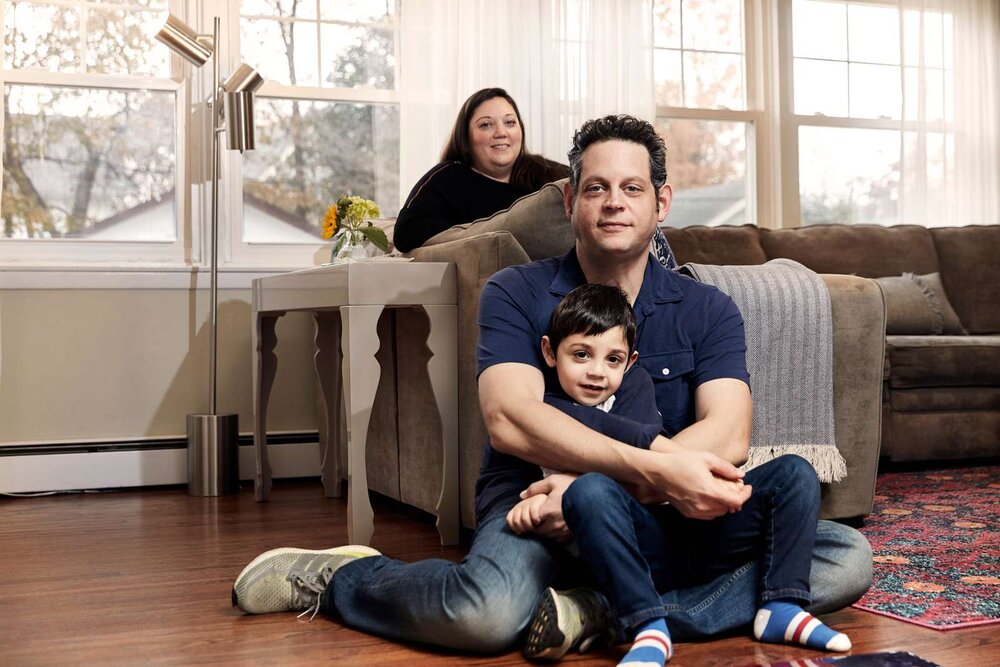
Our child has CHI. What now?
“I can close my eyes and easily remember sitting on the couch in our one-bedroom apartment, bawling hysterically, trying to tell my mother what’s going on, not able to speak about it.” (Crosby’s mother, Julie)
Julie and her husband, Leighton, already knew during pregnancy that their first child, Crosby, would be born with congenital hyperinsulinism (CHI): an ultra-rare genetic disorder that causes the insulin cells of the pancreas, called beta cells, to secrete too much insulin. The disorder may cause Crosby to have cognitive and physical disabilities if not treated adequately.
The family got into contact with a leading care team for treating children with CHI, and engaged with a patient organization specifically for people for CHI, for help dealing with their situation. Looking back, Julie and Leighton feel fortunate to have had the right experts around Crosby, and not left alone with potentially devastating consequences of being discharged prematurely from the hospital because the doctors or the staff didn’t know what to do.
Years of different treatments
Based on Crosby’s genetics, the treatment team knew that he would need a near-total pancreatectomy removing 98% of his pancreas, which was done in the first week after birth. To keep his blood sugar stable, continuous feeding with dextrose is the standard of care. Crosby had a gastric tube (or “G-tube”) inserted surgically to be able to manage continuous feeding with dextrose. It took the medical staff five weeks to stabilize his blood sugar using a G-tube.
Crosby was attached to a tube for six months, and it came with many challenges. The tube leaks. The pump beeps. It’s clogged. It’s kinked. At night, it has a medicine port, and one worries that if the port opens, Crosby would not get the dextrose that he needs and that his stomach contents would empty. If he wasn’t getting dextrose, the family feared that his blood sugar would go down to zero with potential devastating effects on the brain. The family relied on help from home nurses to deal with G-tubes. However, not many nurses are experienced with dealing with CHI. Quickly the family felt like nurses themselves.
In the years that followed, Crosby tried different medical treatments that would substitute dextrose. They had to wait for six months to start the first therapy. It worked for a while and then stopped. Then trying another treatment and hoping that this would work. However, it didn’t work adequately for Crosby at first, and he temporarily went back on continuous dextrose with the G-tube.
“It felt like a big setback, going from having disconnected him from the tube to getting him back on.” (Crosby’s mother, Julie)
Now at the age of five years, Crosby’s remaining pancreas is still producing too much insulin. The family realize that eventually it will burn out and then Crosby will have diabetes instead of CHI.

Constantly worrying that it could go wrong
“Every time you eat, it’s like a balancing act. It’s not like I could say, that I know he is safe when hooked up to the dextrose. He’s not. But there are no other good solutions.” (Crosby’s mother, Julie)
In the coming year, Crosby starts kindergarten. Even though Crosby appears to be a normal kid, any moment his blood sugar can drop to a dangerous level. The family ensures that Crosby has a nurse with him at school because his blood sugar, even on medication, is extremely volatile. It goes low into dangerous levels on a regular basis, sometimes without warning. It would be dangerous if he was at school and someone forgot to correct and manage his blood sugar.
Crosby’s dad, Leighton, explains that the fear of dealing with an attack of severe low blood sugar has prevented him from doing some things with Crosby on his own, like taking him to the playground and out to dinner. The pressure of doing everything correctly is a heavy burden for the parents, who are also receiving therapy regularly.
“I think it’s important that folks know that going to therapy is okay. I’ve been going to therapy for years. It’s really helped me talk about my feelings, process them. I know I’m not alone. I really think it’s had a big impact on my life.” (Crosby’s father, Leighton)
The hyperinsulinism community
Julie and Leighton are engaged in the hyperinsulinism community to help Crosby get to know other children with the disease. The community has provided Crosby opportunities to meet others in a similar situation. Deep friendships are formed quickly during family meetings hosted by the patient organization, and the children are able to enjoy playing together without focus on their difficult and chronic condition.
Note: always consult with a physician for further information about treating a health condition.
Congenital hyperinsulinism (CHI)
CHI is a rare disease affecting mainly newborns and toddlers. It is caused by a defect in pancreatic cells, resulting in insulin overproduction. This leads to persistently and often severely low blood sugar levels (hypoglycemia). CHI develops in one out of 50,000 (or fewer) children. This corresponds to 180-300 children diagnosed in the U.S. and Europe every year.
Sources: Orphanet (not including transient cases due to perinatal stress or diabetic mother); Congenital Hyperinsulinism International.


